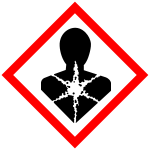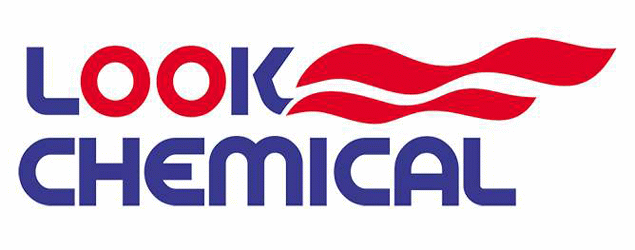

Zinc chromate Metal oxideates
1 Inquiries
13530-65-9
Shanghai
25kg/bag
2024-06-30
Agrochemicals,Daily Chemicals,Catalysts & Chemical Auxiliary Agents,Extract,Inorganic Chemicals,Organic Intermediate
-
Product Description
-
Seller Information
-
Inquiry History
-
DescriptionBasic Info
-
Product Name:
Zinc chromate
Other Name:Chromic acid (H2CrO4),zinc salt (1:1);Zinc chromate(VI) (ZnCrO4);Zinc chromate;Zinc chromate (ZnCrO4);Chromium zinc oxide (ZnCrO4);Zinc chromium oxide (ZnCrO4);Buttercup yellow;Zinc chrome yellow;Zincro ZTO;1308-13-0;1328-67-2;14675-41-3
CAS No.:13530-65-9
Molecular Formula:CrH2O4.Zn
InChIKeys:InChIKey=AQKPQGSTQZCUEV-UHFFFAOYSA-L
Molecular Weight:181.37400
Exact Mass:179.84900
EC Number:236-878-9
UNII:05F2837HUF
ICSC Number:0811
UN Number:3288|3077
DSSTox ID:DTXSID7047485
NCI Thesaurus Code:C45893
Color/Form:Yellow prisms|Lemon yellow powder
Categories:
Characteristics-
PSA:
80.26000
XLogP3:-0.47770
Appearance:Zinc chromate is an odorless yellow solid. Sinks in water. (USCG, 1999)
Density:3.40 g/cm3
Melting Point:316 °C
Water Solubility:Solubility in water: none
Storage Conditions:Storage site should be as close as practical to lab in which carcinogens are to be used, so that only small quantities required for expt need to be carried. Carcinogens should be kept in only one section of cupboard, an explosion-proof refrigerator or freezer (depending on chemicophysical properties ) that bears appropriate label. An inventory should be kept, showing quantity of carcinogen & date it was acquired Facilities for dispensing should be contiguous to storage area.
Odor:Odorless
PH:... hexavalent chromium compounds are acidic
Experimental Properties:Solid yellow, molecular wt: 307.6 /Zinc chromate heptahydrate/|Strong oxidizing agent|Corrosive because of its oxidizing potency /chromate salts/
Air and Water Reactions:No rapid reaction with air. No rapid reaction with water.
Reactive Group:Salts, Basic
Reactivity Alerts:Strong Oxidizing Agent
Reactivity Profile:Oxidizing agents, such as ZINC CHROMATE, can react with reducing agents to generate heat and products that may be gaseous (causing pressurization of closed containers). The products may themselves be capable of further reactions (such as combustion in the air). The chemical reduction of materials in this group can be rapid or even explosive, but often requires initiation (heat, spark, catalyst, addition of a solvent). Explosive mixtures of inorganic oxidizing agents with reducing agents often persist unchanged for long periods if initiation is prevented. Such systems are typically mixtures of solids, but may involve any combination of physical states. Some inorganic oxidizing agents are salts of metals that are soluble in water; dissolution dilutes but does not nullify the oxidizing power of such materials. Organic compounds, in general, have some reducing power and can in principle react with compounds in this class. Actual reactivity varies greatly with the identity of the organic compound. Inorganic oxidizing agents can react violently with active metals, cyanides, esters, and thiocyanates.
Hazard IdentificationClassification of the substance or mixture
Acute toxicity - Category 4, Oral
Skin sensitization, Category 1
Carcinogenicity, Category 1A
Hazardous to the aquatic environment, short-term (Acute) - Category Acute 1
Hazardous to the aquatic environment, long-term (Chronic) - Category Chronic 1
GHS label elements, including precautionary statements
Pictogram(s) 


Signal word Danger
Hazard statement(s) H302 Harmful if swallowed
H317 May cause an allergic skin reaction
H350 May cause cancer
H410 Very toxic to aquatic life with long lasting effects
Precautionary statement(s) Prevention P264 Wash ... thoroughly after handling.
P270 Do not eat, drink or smoke when using this product.
P261 Avoid breathing dust/fume/gas/mist/vapours/spray.
P272 Contaminated work clothing should not be allowed out of the workplace.
P280 Wear protective gloves/protective clothing/eye protection/face protection/hearing protection/...
P203 Obtain, read and follow all safety instructions before use.
P273 Avoid release to the environment.
Response P301+P317 IF SWALLOWED: Get medical help.
P330 Rinse mouth.
P302+P352 IF ON SKIN: Wash with plenty of water/...
P333+P317 If skin irritation or rash occurs: Get medical help.
P321 Specific treatment (see ... on this label).
P362+P364 Take off contaminated clothing and wash it before reuse.
P318 IF exposed or concerned, get medical advice.
P391 Collect spillage.
Storage P405 Store locked up.
Disposal P501 Dispose of contents/container to an appropriate treatment and disposal facility in accordance with applicable laws and regulations, and product characteristics at time of disposal.
Other hazards which do not result in classification
no data available
Handling and StoragePrecautions for safe handling
NO contact with incompatible materials: See Chemical Dangers Handling in a well ventilated place. Wear suitable protective clothing. Avoid contact with skin and eyes. Avoid formation of dust and aerosols. Use non-sparking tools. Prevent fire caused by electrostatic discharge steam.
Conditions for safe storage, including any incompatibilities
Well closed. Separated from food and feedstuffs, reducing agents and organic compounds. Store in an area without drain or sewer access. Provision to contain effluent from fire extinguishing.
-
-
Seller Information
-
Business Type:
Manufactory
-
Main Products:
Agrochemicals,Daily Chemicals,Catalysts & Chemical Auxiliary Agents,Extract,Inorganic Chemicals,Organic Intermediate
-
Location:
hisense intelligence valley,no 2116,of phoenix road
-
Payment Terms:
TT against copy of documents,D/P,L/C
-
Average lead Time:
7
-
Total Annual Revenue:
Less than $1 million
-
Total Employees:
11-50
-
Year of Establishment:
2017
-
-
Inquiry History1 Inquiries
Country Product Purchase Quantity Date Posted  Indonesia
Indonesia
Zinc Chromate
20 MT Jun 19, 2024 Post an enquiry for this product












